History
Presidential Reconstruction
Presidential Reconstruction refers to the period following the American Civil War when President Andrew Johnson implemented his own plan for rebuilding the Southern states. This plan aimed to quickly restore the Union and grant amnesty to former Confederates. However, it faced opposition from Radical Republicans who sought to secure civil rights for freed slaves and ensure a more thorough reconstruction of the South.
Written by Perlego with AI-assistance
Related key terms
12 Key excerpts on "Presidential Reconstruction"
- eBook - ePub
Civil War America
Making a Nation, 1848-1877
- Robert Cook(Author)
- 2014(Publication Date)
- Routledge(Publisher)
7WAR BY ANY OTHER NAME: THE STRUGGLE OVER RECONSTRUCTION, 1865–76
The welcome return of peace in the spring of 1865 witnessed a continuation of the wartime Reconstruction process that would resolve as yet unanswered questions about the relationships pertaining between state and federal governments, North and South, and blacks and whites. More specifically, it brought into sharper focus a problem that had bedeviled all postemancipation societies in the western hemisphere: how to effect a smooth transition between slavery and freedom. Because this problem was intertwined with the task of promoting national reconciliation and the strugglè to order power relations in the newly restored Union, the fraught politics of Reconstruction dominated American life in the decade after the Civil War.Lincoln’s successor in the White House, Andrew Johnson, undertook to restore the late Rebel states to their proper constitutional place inside the Union. His mistake was to underestimate the impact that the Civil War had had on the people of both sections. When it seemed apparent that Johnson’s lenient policies were allowing ex-Confederates to obstruct federal policy and regain their former influence through the ballot box, congressional Republicans attempted to promote at least a modicum of reform in the conquered South. Black suffrage made possible the sudden entry of black Americans into southern political life, a development that was contested fiercely by their former masters. Only as war memories began to fade and new issues began to preoccupy the country did Reconstruction come to an end.The aftermath of war
In his brief second inaugural address delivered on March 4, 1865 President Abraham Lincoln, chastened by God’s evident determination to punish Americans for the sin of slavery, announced that having fought a hard war, he would seek a generous peace. As his rousing peroration made clear, his overriding goal was national reconciliation: - eBook - ePub
- John David Smith(Author)
- 2016(Publication Date)
- The Kent State University Press(Publisher)
CHAPTER TWOPresidential Reconstruction
KEVIN ADAMS
Formal studies of Presidential Reconstruction—that is, the period of federal Reconstruction policy that preceded the advent of Congressional or Radical Reconstruction in 1867—have been rare in recent years, a neglect that becomes especially clear when considering the series of impressive studies exploring Reconstruction’s final stages that appeared in the first decade of the twentieth-first century.1 Yet even a cursory glance at the recent literature makes it quite clear that historians have not ignored the crucial timespan between the Emancipation Proclamation and the commencement of Congressional Reconstruction with the seating of the Fortieth Congress’s Republican supermajority in the spring of 1867. Indeed, works almost too numerous to list constitute this past generation’s contribution to historical knowledge concerning the fraught transition from war to peace in the former Confederacy.2 This outpouring of research has done a marvelous job of exploring the nuances of the time span that constituted Presidential Reconstruction, but remarkably few of these studies have attempted to say very much about Presidential Reconstruction itself.In large part, this development reflects the evolution of the historical profession since debates over Presidential Reconstruction animated historians of the United States some fifty years ago. As methodological trends favoring studies devoted to sweeping sociocultural constructs (for example, the free labor ideology), specific places, or particular (often marginalized) social groups became more standard, fewer and fewer historians examined Presidential Reconstruction from the perspective of policy formulation or implementation.3 Not even the resurgence of political history, most evident in the analyses of American state power and institutional development produced by historians, political scientists, and sociologists working in the thriving subfield of American Political Development, has prompted a reconsideration of Reconstruction. Leading works in this field have either dismissed Reconstruction as a “decidedly uncharacteristic period” comprised of “sufficiently peculiar” circumstances to justify passing it by or have portrayed Reconstruction as a moment whose revolutionary potential “was tightly circumscribed” by conservative notions of state power.4 - eBook - ePub
Unto a Good Land
A History of the American People, Volume 1: To 1900
- David Edwin Harrell, Edwin S. Gaustad, John B. Boles, Sally Foreman Griffith(Authors)
- 2005(Publication Date)
- Eerdmans(Publisher)
Questions about reconstructing the South began before the war was over. The emancipation of the slaves meant that Union victory would bring fundamental social and political changes to a defeated South. The days of plantation slavery were past, “gone with the wind.” But the scope of those changes remained unclear during the war. The need to win the war overrode considerations about building a postwar society. Until Union victory was assured, Reconstruction remained largely an instrument of military policy, a way to gain support for the Union and emancipation and undermine the Confederacy. As long as military exigency drove Reconstruction policy, the president held the initiative in his capacity as commander in chief, but in 1864, with Confederates in retreat across a broad front, Congress sought a larger role.For two years, President Lincoln had tried to nurture Unionism in those areas of the South that came under federal control. In the Border States, western Virginia (which became the separate state of West Virginia in 1863), and occupied parts of Tennessee, Louisiana, Arkansas, and elsewhere, Lincoln used political patronage and advice in an effort to move southerners toward accepting the end of slavery and making friendly governments. These were, in Lincoln’s words, “experiments” adapted to the circumstances of each state rather than mandates or a uniform policy. As Republican James G. Blaine observed, “Mr. Lincoln had no fixed plan for the reconstruction of the States.”On December 8, 1863, President Lincoln laid out his first comprehensive proposal for Reconstruction when he issued his Proclamation of Amnesty and Reconstruction. Lincoln’s proclamation established a process whereby a seceded state might return to the Union. It proposed that when, in any such state, the number of qualified voters taking an oath of allegiance to the Union and pledging to accept the abolition of slavery equaled 10 percent of the number of people in that state who had voted in the 1860 presidential election, that minority might create a new state government. The constitution of that government had to be republican in form (as required in the Constitution), abolish slavery, and provide for African American education. Upon completion of these terms, the president would recognize the new civil government. - eBook - ePub
A House Divided
The Civil War and Nineteenth-Century America
- Jonathan Wells(Author)
- 2016(Publication Date)
- Routledge(Publisher)
11 Reconstruction Begins Topics Covered in this Chapter:- ■ African Americans and the Freedmen’s Bureau After the War
- ■ Andrew Johnson and Presidential Reconstruction
- ■ Politics and Elections
- ■ Congressional Reconstruction, 1866–1872
- ■ Johnson’s Impeachment
- ■ White Southern Retrenchment
Introduction
The end of the Civil War settled key questions that had been vexing the nation since its inception. Slavery, an American institution since the earliest days of Virginia‘s Jamestown colony, would no longer be permitted. Although the effects of bondage would last for generations, and though the end of slavery did not mean the end of racism or the establishment of racial equality in either the North or the South, the Thirteenth Amendment to the Constitution ensured that slavery could no longer haunt the Republic. Yet the end of the war also meant that four million freedpeople now needed protection, food, shelter, education, and work. Much of Reconstruction, the period between 1865 and 1877, would be devoted to assessing and trying to meet the needs of the newly freed African Americans. The Freedmen‘s Bureau, the American Missionary Association, and thousands of northern “carpetbaggers” (a derisive term southern whites used for northerners who moved to the South) worked hard to provide for the freedpeople. Formerly enslaved men and women also worked tirelessly to take action themselves. Thousands of African Americans across the South joined mutual aid societies, established schools, and formed organizations of all kinds to ease the transition to freedom.But the need was great, and so was white southern resentment at northern interference in their region, although many white southerners saw the end of the war as the chance to remake the South. Thousands of white southerners joined the Republican Party and tried to work toward a New South without slavery; and for a time it appeared that southern Republicans, both white and black, might indeed be able to put the region on a different path, one that was not free of racism or social injustice but perhaps a New South that would move in the direction of a more progressive economy and society. It was not to be. Just as congressional Republicans determined to remake the South, so too did white southern political leaders dig in their heels to keep the region under white control. So while the war ended long-standing debates about the legitimacy of slavery, profound questions and issues remained: What role would the millions of former slaves play in a reconstructed Union? Would blacks and whites be able to live and work peacefully in the same nation? How much would racism undermine the progress of freedpeople? Would the former slaves be able to vote and enjoy the full civil rights of white citizens? - eBook - ePub
Liberty and Union
A Constitutional History of the United States, concise edition
- Edgar McManus, Tara Helfman(Authors)
- 2014(Publication Date)
- Routledge(Publisher)
XIReconstructing the Nation“[E]very man, no matter what his race or color; every earthly being who has an immortal soul, has an equal right to justice, honesty, and fair play with every other man; and the law should secure him those rights.”—Thaddeus Stevens in Congress (1867)Lincoln’s differences with Congress over Reconstruction flared into political warfare after his assassination in April of 1865. His successor, Andrew Johnson, lacked the tact and political skill needed to lead the nation during the difficult postwar years. A Tennessee Democrat and opponent of secession, he had stayed in the Senate when his state seceded. Johnson served with distinction as military governor of Tennessee, and he was nominated as Lincoln’s running mate on the National Union Party ticket in 1864. Republicans felt comfortable with a vice president who had urged Tennesseans to abolish slavery “because in the emancipation of slaves we break down an odious and dangerous aristocracy. I think we are freeing more whites than blacks in Tennessee.” So it came as a shock when Johnson issued an amnesty proclamation in May of 1865 pardoning former rebels who took an oath of future allegiance to the United States. The only persons excluded from the offer were high-ranking Confederate officials and persons owning more than $20,000 worth of taxable property. But those excluded from the general amnesty could apply to the president for individual pardons that would be considered separately. At the stroke of a pen, Johnson wiped the slate clean for the vast majority of southerners.Johnson’s Plan of Reconstruction
Johnson’s plan for restoring civil government in the South accompanied his amnesty proclamation. Provisional governors appointed by the president would enroll the loyal voters in every southern state for the election of a state constitutional convention, and all pardoned rebels would be eligible to vote and participate in the process. The reconstructed state would be readmitted to the Union as soon as the new government repudiated the Confederate debt, abolished slavery as a domestic institution, and ratified the Thirteenth Amendment. When these conditions had been met, full control over internal affairs would be restored to the state along with the right to representation in Congress. During the next few months Johnson recognized the reconstructed governments established by Lincoln in Louisiana, Tennessee, Arkansas, and Virginia. His plan called for getting the South back into the Union quickly without sweeping political or social changes. - eBook - ePub
A Nation Divided
Reassessing the New Birth of Freedom
- Orville Vernon Burton, J. Brent Morris, Orville Vernon Burton, J. Brent Morris(Authors)
- 2023(Publication Date)
- University of Virginia Press(Publisher)
Building a New Political OrderReconstruction, Capitalism, and the Contest over the American State
Nicolas BarreyreR econstruction seems ripe for reinterpretation. New syntheses have started to emerge again.1 Historiographical surveys report a vibrant field, both deepening old questions (the use of violence, the transformations of racial relations after abolition, the changes in the lives and the activism of African Americans) and exploring newer issues (the multifaceted role of women, the mutation of gender relations across racial and social groups, the transnational dimensions of post-emancipation politics). Recent scholarship has also taken the history of Reconstruction into previously under-surveyed quarters. Historians of the U.S. West explore the transformations in territorial appropriations and Native American expropriations in the wake of the consolidation of the federal state in what some term the “Greater Reconstruction.” Others have broadened the chronological scope and explored changes in ideology, liberalism, or culture that were rooted in the legacy of the Civil War and the path taken during Reconstruction. More locally, new work has also focused on fine-grained descriptions of social relations and the degrees of coercion they could convey in newfound varieties of freedom and unfreedom (a new word) that complicate the older binary between slavery and liberty.2These multidirectional creative endeavors have deepened our knowledge and understanding of American society after the Civil War. But they have also blurred the meaning of “Reconstruction,” as its scope has widened increasingly from the previously narrow bounds of the Southern states. So, does Reconstruction stand for the whole postbellum period, made to shoulder the responsibility of accounting for every development in those years lest it be accused of hiding vast swaths of the historical reality? Is it more of a metaphor to designate the large transformations happening in American society after the war, which would account for the large variety of chronological spans now attached to the word? The very richness of the scholarship gave it so many hues that the plural is sometimes in order—Reconstructions—when the word itself is not entirely pushed aside, too polymorphic to be of use anymore.3 - eBook - ePub
- Jeffrey K. Tulis, Nicole Mellow(Authors)
- 2018(Publication Date)
- University of Chicago Press(Publisher)
The president then proceeded to grant clemency to 13,500 out of 15,000 applicants, thus restoring citizenship and property rights to a large portion of the former Confederate elite. 9 By preempting Congress with his restoration plan, Johnson strove to put the white South back on its political feet as quickly as possible. This would ensure that the region had the normal tools of political contestation, including congressional representation and some version of state sovereignty, with which to settle the terms of the postwar era. Short of the reinstitution of slavery, southern elites could not ask for better terms. Not only were Johnson’s conditions generous but the process of implementing them would be quick. Indeed, southern representatives were presenting themselves to be seated in Congress by the time that body reconvened in December 1865. True, the war effort in the South had cost $2.3 billion (far more than in the North, proportionate to resources), and repudiation of the debt left many without the opportunity to reclaim their former wealth. But the quicker they could restore their fields and resume economic production, the sooner they would return to prosperity. 10 Most important, as the South had been defeated militarily, a quick restoration of political representation in the national government was essential if white Southerners were to restrain (or reverse) policy initiatives of northern lawmakers. With a Democrat, albeit a Union loyalist, in the executive office, particularly one making overtures to the region, and sympathetic fellow Democrats still retaining a foothold in the North, a legislative remedy for some of the ills of defeat was entirely feasible. 11 Johnson’s preemptive move to quickly reinstate southern lawmakers was a clear act of legislative obstruction on the president’s part, and Northerners knew it - eBook - ePub
- Robert A. Calvert, Arnoldo De Leon, Gregg Cantrell(Authors)
- 2020(Publication Date)
- Wiley-Blackwell(Publisher)
6 The Era of Reconstruction, 1865–1876What was to be the agenda for the country’s future now that the Civil War had ended? Even the victorious Republican Party of the North held divergent views. One element within the party gave uppermost importance to granting citizenship to the newly freed slaves. These Radical Republicans, as they came to be called, were a distinct minority within the party in 1865, and they advocated extending full civil rights to ex‐slaves, among them the franchise, education, and, possibly, ownership of confiscated Rebel land. Another, more moderate, faction within the Republican Party principally pursued economic development. During the course of the war, moderate Republicans succeeded in enacting a protective tariff, a plan of internal improvements (that is, improving transportation networks), a national banking system, and a homestead law that permitted the rapid settlement of the West. Backers of this agenda sought to keep southerners from undermining the vibrancy of an expanding national economy by their opposition to the new programs, their insistence on states’ rights (the cornerstone of southern politics), and their demands for other concessions. Northern Democrats, not to be dismissed from determining the course of the nation, held still other views on the future of the postbellum United States. Nevertheless, nearly all Republicans believed that African Americans should, at the very least, have some measure of equality under the law.In April 1865, the war moved from the battlefield to the political arena. Texans, as did other southerners, sought to reestablish the Democratic rule that held sway before the war. Most urgent, for them, was to find a way to keep a newly freed black population (estimated by scholars to have numbered about 250,000) in subordination. In the differing goals of Republicans and southern Democrats lay the seeds of division and confrontation that would mark the era of Reconstruction. - eBook - ePub
South Carolina in the Civil War and Reconstruction Eras
Essays from the Proceedings of the South Carolina Historical Association
- Michael Brem Bonner, Fritz Hamer, Michael Brem Bonner, Fritz Hamer(Authors)
- 2016(Publication Date)
- University of South Carolina Press(Publisher)
Andrew Johnson and Reconstruction (Chicago: University of Chicago Press, 1960), 14.13 . Ibid., 66.14 . Ibid., 95.15 . David H. Donald, The Politics of Reconstruction, 1863–1867 (Baton Rouge: Louisiana State University Press, 1965), 23.16 . David H. Donald, “Why They Impeached Andrew Johnson,” American Heritage 8 (December 1956): 103.17 . W. E. Burghardt DuBois, Black Reconstruction: An Essay toward a History of the Part Which Black Folk Played in the Attempt to Reconstruct Democracy in America, 1860–1880 (New York: Harcourt, Brace & Co., 1935), 241–42, 332.18 . Fawn M. Bodie, Thaddeus Stevens: Scourge of the South (New York: Norton, 1959); Ralph Korngold, Thaddeus Stevens: A Being Darkly Wise and Rudely Great (New York: Harcourt, Brace & Co., 1955); Alphonse B. Miller, Thaddeus Stevens (New York: Harper, 1939); Thomas Frederick Woodley, Great Leveler: The Life of Thaddeus Stevens (New York: Stackpole Sons, 1937).19 . James M. McPherson, The Struggle for Equality: Abolitionists and the Negro in the Civil War and Reconstruction (Princeton, N.J.: Princeton University Press, 1964).20 . W. R. Brock, An American Crisis: Congress and Reconstruction, 1865–1867 (London: Macmillan & Co., 1963).21 . Kenneth M. Stampp, The Era of Reconstruction, 1865–1877 (New York: Knopf, 1965), 82.Passage contains an image
RIGHTEOUS LIVESA Comparative Study of the South Carolina Scalawag Leadership during Reconstruction (2003)Lewie ReeceR - eBook - ePub
True Blue
White Unionists in the Deep South during the Civil War and Reconstruction
- Clayton J. Butler(Author)
- 2022(Publication Date)
- LSU Press(Publisher)
CHAPTER 5 Losing the Peace White Unionists in Presidential Reconstruction, 1865–1867W hite southern Unionists assumed a central role during Reconstruction and shaped the profound social and political fluctuations of the era in important ways. The experiences of former Unionists in that crucial and contentious period—their motivations, aims, and expectations—illustrate some of Reconstruction’s key dynamics. Unionists’ mistreatment by former Confederates helped galvanize the North to embrace Congressional Reconstruction, and many played notable political and civic roles based on their war record. They became judges, legislators, and governors, and moved in the highest circles of power; they were also called traitors to their race and became the victims of mob violence and the Klan. Some, finding common cause, allied themselves politically with newly emancipated African Americans; others refused to do so. By contributing to the “redemption” of their states by the Democratic Party, they helped ensure the resumption of white rule throughout the Deep South. Prominent Unionists, because of the stand they had taken and the risks they had run during the late conflict, expected a seat at the table in the postwar decision-making process, and many did indeed go on to make a substantial impact on their states and on the nation. Former Unionists remained an important, distinct group even after the crisis of the Union had come to an end, and proved pivotal to the trajectory of the postwar era.1To many observers throughout the reunited nation, white southerners who had stood by the Union at all hazards appeared the first and most natural component of a potential Republican constituency in the postwar South. Their wartime unity of purpose, however, proved illusory, and rapidly evaporated with the reestablishment of peace. The nucleus of unconditional Unionism that the administration had attempted to cultivate in the Deep South during the conflict failed to mature into a reliable base of white support during Reconstruction. Unionists for the most part remained deeply unpopular and greatly outnumbered among the white population. Divergent prewar political leanings among them reemerged and—critically for the party, the region, and the nation—white southern Unionists split in the postwar period, most commonly over the issues of disenfranchisement of former rebels and civil rights for African Americans. The sole foundation of their past cooperation had been their uncompromising Unionism, and with the integrity of the Union no longer at issue, that foundation quickly gave way to conflicting visions for its future. “Unionism . . . - Prof. J. G. Randall, Prof. David Donald(Authors)
- 2016(Publication Date)
- Golden Springs Publishing(Publisher)
Such were the main steps by which the states put the President’s plan into operation. It was a program that did not disfranchise the ex-Confederates. The fundamental principle was that the new governments were based not upon a denial of political rights because of past conduct, but upon a policy which recognized a return to Federal allegiance as a sufficient prerequisite to political enfranchisement. That the American system should return to its normal functioning was the President’s purpose. The process involved direct personal cooperation between the President and the leaders of state reorganization in the South. Southern delegations conferred with Johnson in person, acquainting him with local conditions, presenting unforeseen problems, and receiving his direct pledges of reconciliation.7On the question of Southern readiness for loyal participation in the Union there was a conflict of evidence. After a tour of the South in November-December, 1865, General Grant, who, according to his own testimony, had never been an abolitionist, nor even “antislavery,” reported that “the mass of thinking men of the South accept the present situation of affairs in good faith.” His observations led him to the conclusion “that the citizens of the Southern States are anxious to return to self-government within the Union as soon as possible.” He regretted that there could not be a greater “commingling...between the citizens of the two sections, and particularly of those intrusted with the lawmaking power.”{1407} Benjamin C. Truman, a newspaper correspondent who made a report to the President on conditions in the South, emphatically denied the charge that Northern men in the South were being persecuted. “For some unknown cause [he wrote] a large number of persons are engaged in writing and circulating falsehoods. For some unpatriotic purpose or other, reports of an incendiary character concerning the southern people are transmitted north.” Referring to conditions early in 1866, Truman declared his belief that “the south—the great, substantial, and prevailing element—is more loyal now than it was at the end of the war—more loyal today than yesterday, and that it will be more loyal tomorrow than today.”{1408}- eBook - ePub
Race and Reunion
The Civil War in American Memory
- David W. Blight(Author)
- 2002(Publication Date)
- Belknap Press(Publisher)
FOURReconstruction and Reconciliation
If war among the whites brought peace and liberty to blacks, what will peace among the whites bring?—FREDERICK DOUGLASS , July 5, 1875IN THE AMERICAN ELECTIONS from 1868 to 1876, the vast majority of voters were participants, survivors, or freedmen whose adult lives and political sensibilities had been shaped by the war and the struggle over Reconstruction. Hence even as the reunion took root during the years surrounding these elections, each campaign served as a referendum on both the sectional and the racial meanings of the war. Bloody shirts still waved everywhere as politicians sought to permanently bury the issues of the war and simultaneously used those very issues to fan the flames of political difference. The differences were real, and the issues could not yet be buried, at least until the mid-1870s. The nation was healing, but not yet healed.Some historians have argued that postwar elections in America were driven by a “partisan imperative”—the deep-seated political habits and loyalties (forged since the crises of the 1850s) vested in the Democratic and Republican parties. According to this argument, habitual party connections, with their institutional and communal relationships, especially locally, were more important than events or ideas in shaping voter behavior. Conservative Republicans, disenchanted with their own party’s radicalism by 1868, just could not abide mingling with Democrats. More so, the party on the defensive, the Democrats, especially moderates seeking a new legitimacy, could not abide even the antiradical elements of the party of Lincoln. With intense partisanship, both parties waged political warfare that replaced real warfare. But if the aim of both parties “was to reinvigorate the memories of these party relations,” perhaps it is worth examining what the memories were all about.1
Index pages curate the most relevant extracts from our library of academic textbooks. They’ve been created using an in-house natural language model (NLM), each adding context and meaning to key research topics.
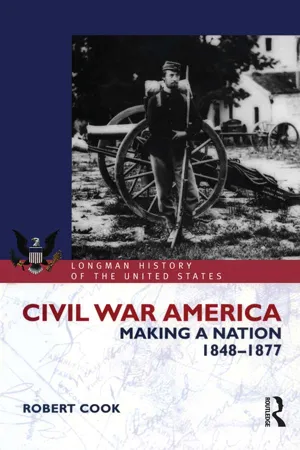
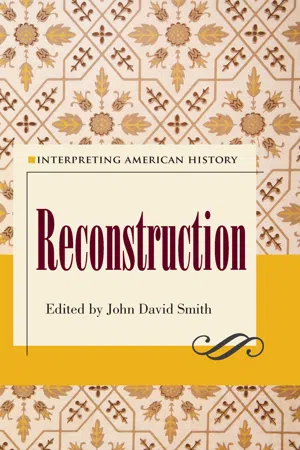
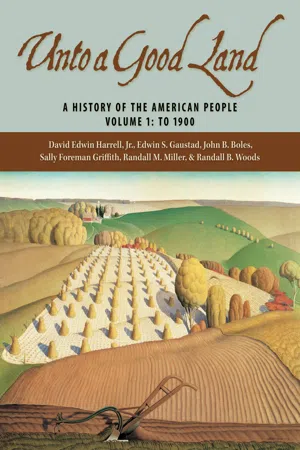
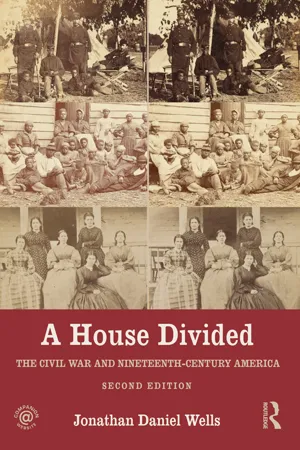
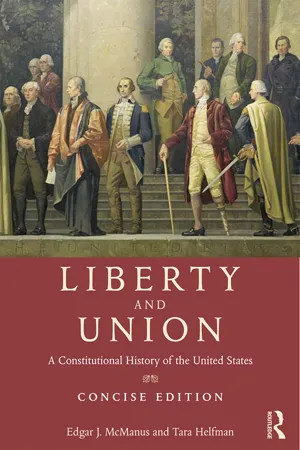
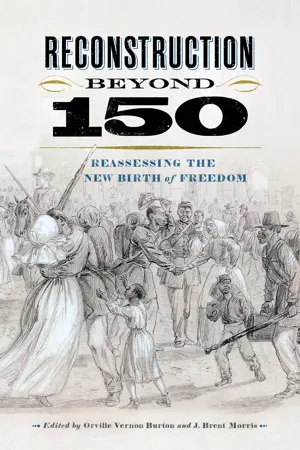

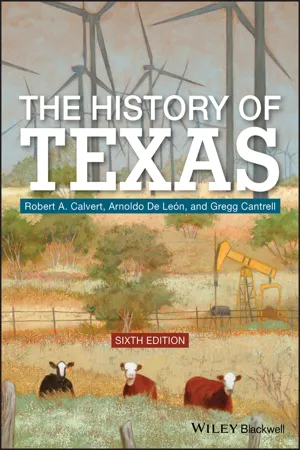
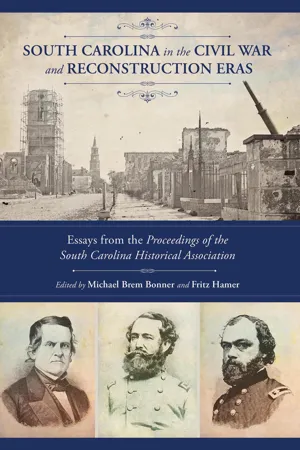
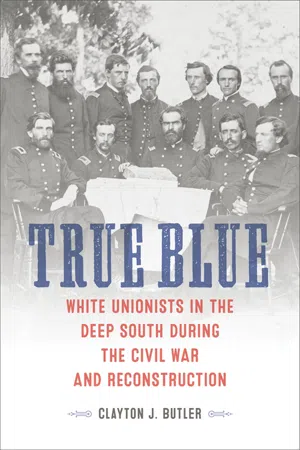
![The Civil War and Reconstruction [Second Edition]](https://img.perlego.com/book-covers/3020131/9781787200272_300_450.webp)
